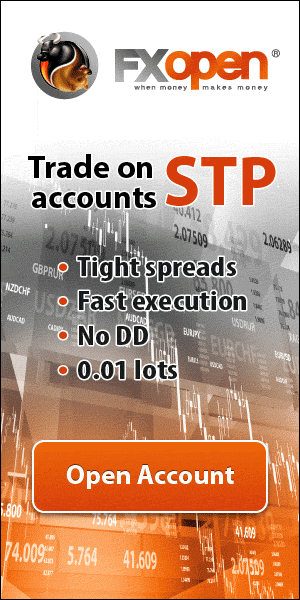Algorithmic trading forex

Algorithmic trading forex is a method of trading using certain algorithms to be able to trade automatically. Some call it automated trading, black-box trading, or Algo trading.
Technological advances have provided many conveniences in the forex market.
Forex trading can now be fast using your computer or smartphone. This makes it possible for retail traders to enter the market and real-time prices lead to much better transparency.
Another significant change is the existence of algorithmic trading strategies. This leads to an increase in the forex trading function on the one hand, while on the other hand also an increase in risk.
In this article, we will explore deeper about algorithmic trading forex.
Trading forex, crypto and CFD with TenkoFX, manual or automated trading.
Open an account or try Demo account.
What is algorithmic trading forex?
Forex trading algorithm is a trading system that uses a complex mathematical model that was sophisticate. And becomes the basis for decision-makers with fast transaction execution on the forex market.
The characteristic is fast execution. This involves the use of computer programs and algorithmic program steps to create and determine trading strategies for optimal profits.
For example, in investment, hedging is a way to protect assets from significant losses by reducing the risk of loss from something unexpected.
In trading algorithms, you can apply hedging strategies automatically to reduce the risk to the trader. This kind of hedging order automatically follows certain models to manage and monitor the level of portfolio risk.
The main method of trading using hedging in the forex market is through spot contracts and forex options. Spot contracts are purchases or sales of foreign currencies with the instant transfer.
The movement in market prices allows the emergence of arbitration opportunities.
Arbitration opportunities can arise from the process of converting a currency back into its own value through the process of converting to several different currencies.
To be able to capture these opportunities quickly requires an automatic algorithm program to be able to identify these opportunities.
Advantages of Algorithmic trading
There are several advantages to using algorithm-based trading.
- Besides offering profit prospects, trading algorithms can also avoid emotional involvement as with manual trading.
- With algorithmic trading, greed and fear of losing capital will be eliminated.
- Besides that forex trading, designing algorithmic in such a way as to be able to monitor trading and markets so that traders do not need to be in front of the monitor every time.
- The trading algorithm will carry out all processes in automatic mode so that traders intervene to place orders manually.
- All are program and if all parameters have been met, it will carry out transactions automatically.
- Basically, the program will only execute at the specific price that was set at the beginning.
- Trading is done automatically, from opening to closing positions.
- Trading will be more precise according to the initial parameters because there is no emotional intervention. In other words trading algorithm is very effective and efficient.
- Trading algorithms can also reduce the total costs involved.
Traders do not have to do the analysis manually, which is often wrong because it is too emotional, and all the computers that will do it at once executed.
Traders only need to install automatic software on the trading platform.
Forex Trading Algorithmic Risks
One of the risks in algorithmic trading is the imbalance of the participants’ trading power.
Some traders with means can obtain advanced technology so that they get information faster and execute orders at a much faster speed than other traders.
This condition can cause fragmentation in the market and a lack of liquidity.
In addition, there are those who believe that high-frequency trading that results from algorithmic trading can cause market crashes and can also affect the forex market.
If the market changes drastically, the algorithm might not respond fast enough, because it’s only programmed for certain market scenarios.
In extreme circumstances, the simultaneous suspension of algorithmic trading by many market participants can cause high volatility and a drastic reduction in market liquidity.
Basics of Forex Algorithmic Trading
Algorithms are special rules designed to accomplish predetermined tasks.
Algorithms in the forex market with computers that use algorithms have been predetermined by the user with a set of rules, such as price, time, or the amount that determines to trade.
There are several basic types of algorithmic forex trading.
- Statistically, this is an algorithmic strategy that seeks trading opportunities based on a statistical analysis of historical time series data.
- Auto-hedging is an algorithm that produces rules in order to reduce exposure to risk.
- The execution strategy is algorithmic to execute predetermined goals, for example, make fast trading and reduce market impact.
- Direct market access is algorithmic which illustrates the optimization of speed and low costs so that algorithmic traders can access and connect with several trading platforms.
One algorithmic forex trading is high-frequency trading. This trading algorithm can do a very high speed of trading order execution.
High-frequency trading can have the ability to trade only in milliseconds and this allows to provide significant profits for traders. So many traders like to forex algorithmic trading.
However, this also has a risk when trading in the volatile forex market.
Algorithm Trading Strategies
There are several types of Algo trading based on the strategy of the use. Included Python for financial analysis and algorithmic trading
This gives traders the choice in determining algorithmic trading to be used.
Follow the trend
This strategy is to follow market trends, with buy or sell orders that automatically open a transaction if it has met a series of conditions given by technical indicators.
For example using a moving average indicator which is a trend following indicator, in trading Algo can use a cross of two moving averages to open a new order, if signal confirmed will open new order automatically.
News based
A news-based algorithmic trading system is a strategy that uses news cables, which automatically generates trading signals depending on how the actual data compares to the previous data.
If the actual data differences with the previous have met, it will automatically open a new position.
Market sentiment
Market sentiment strategy is by determining commercial and non-commercial positions to determine the peak and market base.
This strategy can involve the use of COT reports or systems that detect extreme short or long net positions.
Or more modern is scanning social media networks to measure currency bias.
Arbitrage
Arbitrage in algorithmic trading is how the system looks for price imbalances in various markets and generates profits from it.
As we have already mentioned that to be able to conduct arbitration requires a fairly complicated algorithm.
For example triangle arbitrage, which utilizes two currency pairs and a currency pair between the two, to get price imbalances.
High-frequency trading
High-frequency trading is a way of trading at lightning speed, this algorithm is able to execute buy or sell signals and close trades in a matter of milliseconds.
This is usually the case for arbitration and scalping strategies based on rapid price fluctuations in the short term and involving high trading volumes.
Iceberging
This strategy that uses is large financial institutions that are very secretive about their forex positions.
Their algorithm not only places Buy or Sell positions on one broker but split their trades into smaller positions and execute this on a different broker.
This algorithm allows to placing smaller trading orders at different times with the aim of preventing other market participants from knowing.
So that the financial institution can trade under normal market conditions without sudden price fluctuations.
Retail traders who track trading volume can only see prices rise or fall quickly when it comes to this big trade.
Stealth
Stealth strategies are even more cunning than Iceberging.
Iceberging has become a common practice that allows hardcore market observers to hack this idea and produce algorithms to collect these smaller orders and find out if the big market players are behind it.
This requires a strong background in financial market analysis and computer programming skills to be able to design such sophisticated trading algorithms.
Examples of using algorithmic trading
Let say we look at the RDS (Royal Dutch Shell) is listed on the Amsterdam Stock Exchange (AEX) and London Stock Exchange (LSE).
The next step is to find an algorithm to identify arbitration opportunities.
In this case, we observe as follows.
- AEX trades in Euros, while LSE trades with Pound Sterling
- Due to the one hour time difference, AEX opens one hour earlier than the LSE. Then there will be a time when trading exchanges operate simultaneously for several hours.
- And traded only on LSE during the last Hours when AEX was closed.
Is the arbitration opportunity on Royal Dutch Shell shares listed in these two markets in these two different currencies?
An algorithmic computer program must be able to read feeds from LSE and AEX A currencies for the GBP-EUR exchange rate at current market prices.
The ability of the algorithm must be able to direct orders to the correct exchange. Ability to retest to historical price feeds.
The computer algorithmic program must do the following:
- Can read the price feed on RDS shares from both exchanges using the available foreign exchange rates.
- Change the price of one currency to another.
- If there is a large enough price difference that leads to profitable opportunities. Then place the buy order at the lower exchange rate and order sell at a higher price.
If executed the order can be executed as per the correct parameters, the arbitration profit will be easy and simple.
Final thought
However, the practice of algorithmic trading is not that simple to maintain and carry out.
If you can place trades that are generated on an Algo basis, so can other market participants.
As a result, prices fluctuate in milliseconds and even microseconds.
In the example above, what happens if your buy trade will be executed?
But selling trade is not like the selling price changes when your order touches the market you will finally sit in an open position.
It making your arbitration strategy worthless.
And more, there are additional risks and challenges. For example, the risk of system failure, network connectivity errors, time lags between orders, and trade execution, and none of the algorithms are perfect.
Are you ready to trade forex?
Open an account or try Demo account.
You may read other article
Forex trading tips for beginners who want to earn
Investor and trader, what you will choose?
Forex participants, Who is them?
Forex trading money management strategies

















